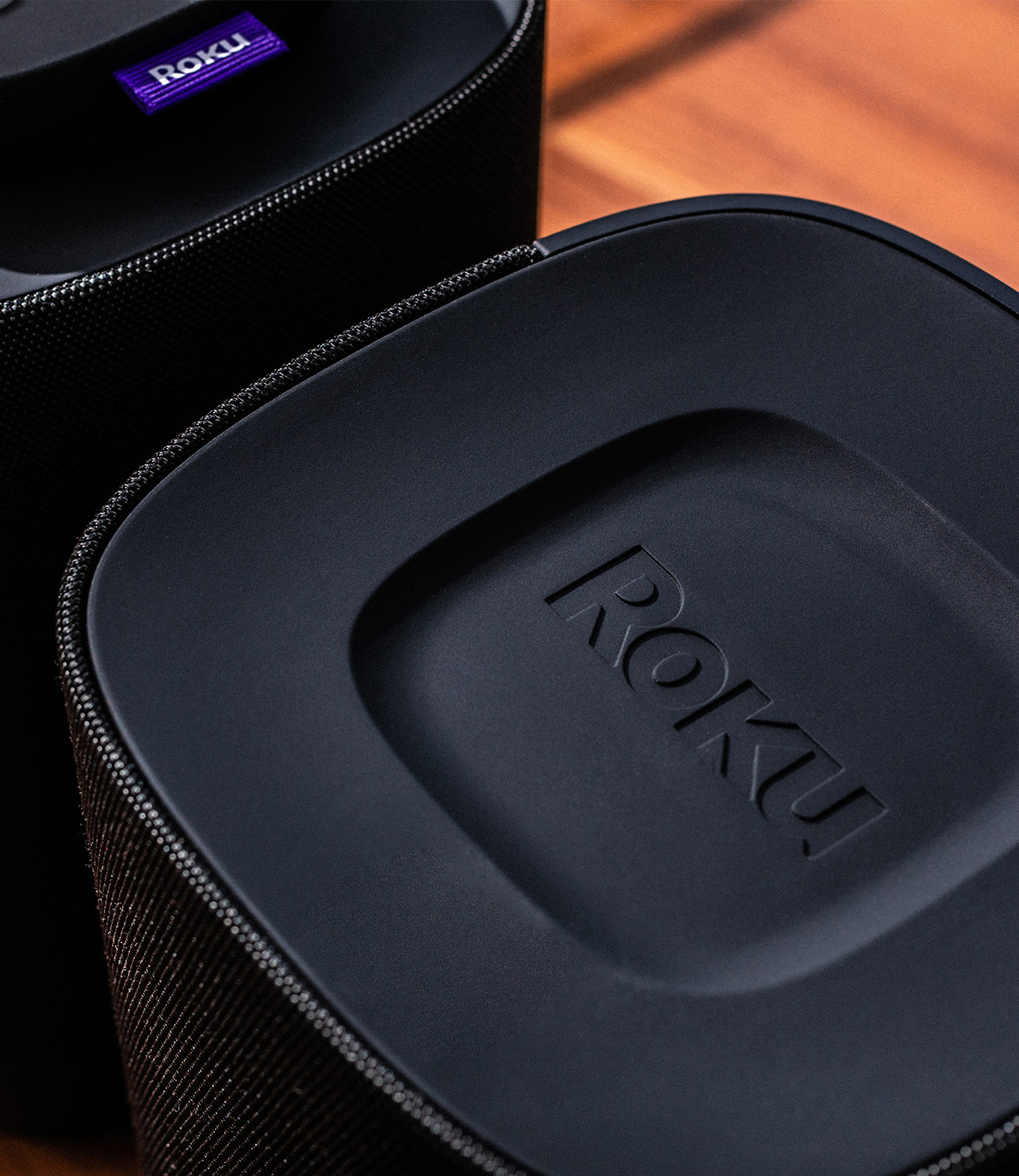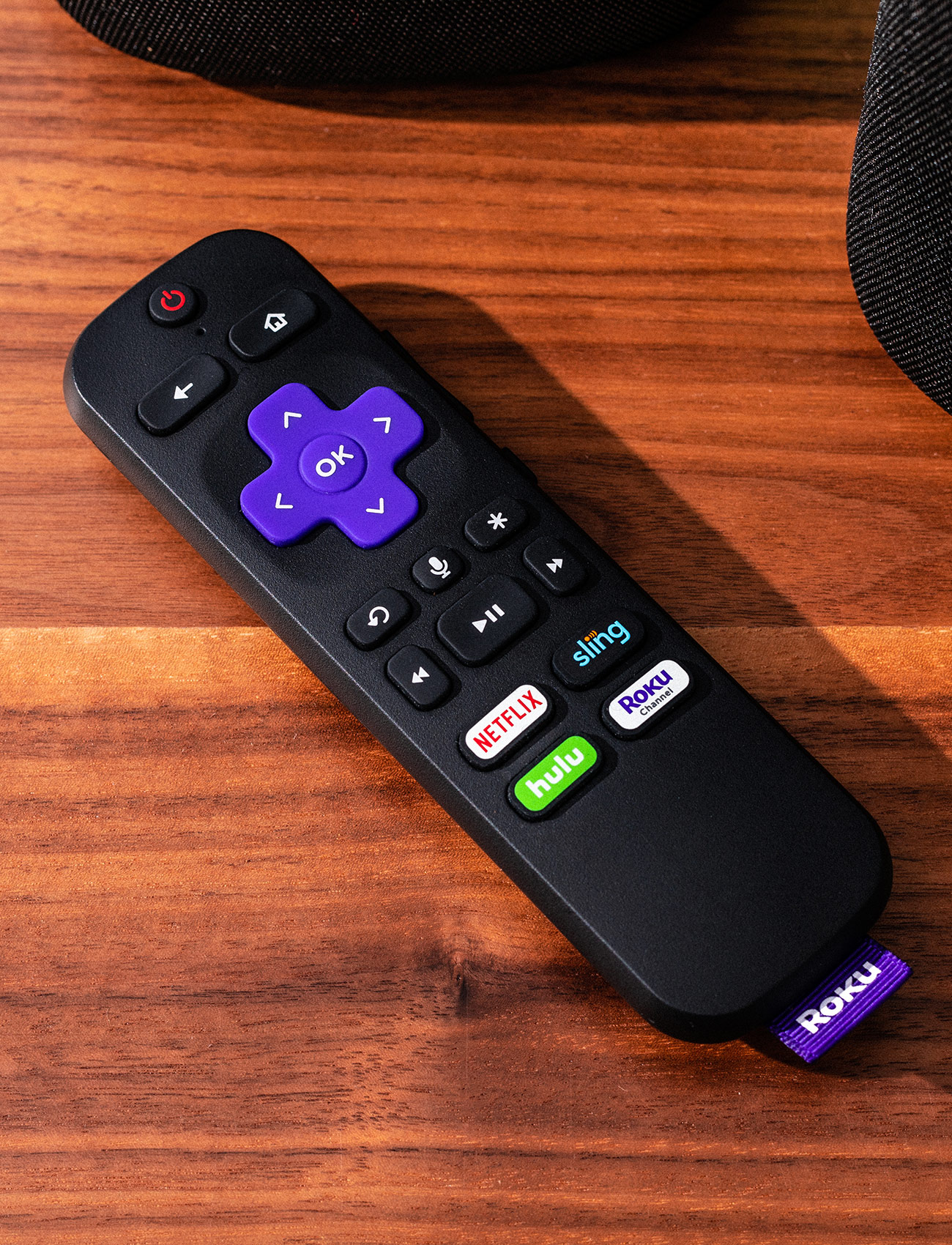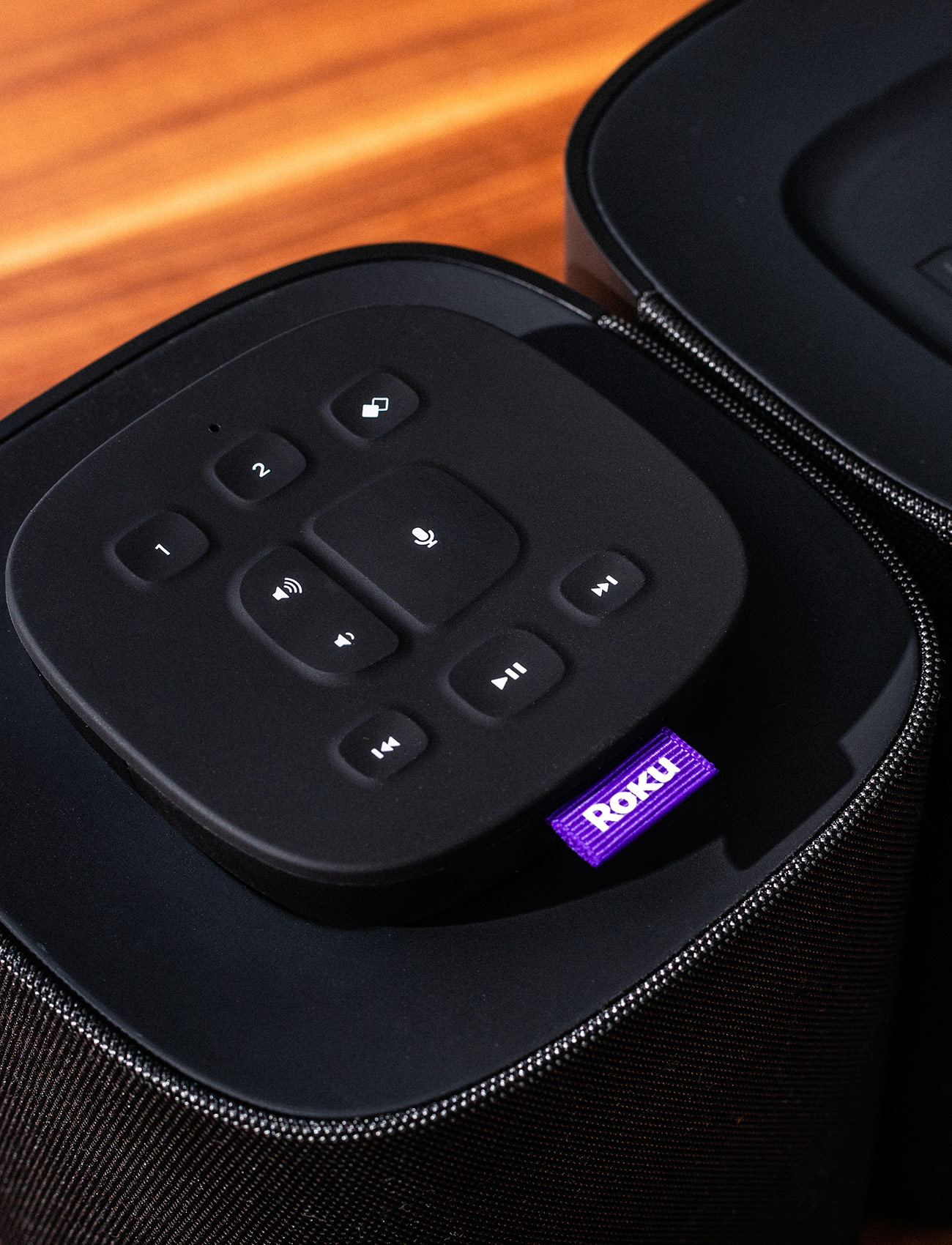Roku TV Wireless Speakers ($200) are the company’s first-ever audio product and they’re designed to work with Roku smart TVs, and only Roku smart TVs. This means they’re compatible with hundreds of TVs made by the likes of TCL, Insignia, Sharp, Hisense, Philips and others; as long as the TV runs Roku’s smart operating system, these speakers will work with it. (Although they are not compatible with Roku streaming sticks.)
Their selling point is simple: most modern televisions are too thin to have good built-in speakers — in fact, most modern TVs, especially “budget TVs” (which most Roku smart TVs tend to be), have such poor speakers that dialogue is hard to make out and bass is near non-existent – these speakers, which are easy to install, are an inexpensive upgrade. There’s no need to deal with a receiver or wires, as these speakers will connect to your TV over wi-fi; just plug them in and your TV will detect them. Click through a few menu screens and you’re done — setup takes less than a five minutes. These speakers are the easiest and cheapest way to upgrade your Roku TV’s audio.
The Roku TV Wireless Speakers were just released this past November and for a limited time you can get them for $180. The deal runs through 12/31.
The Good: The difference these speakers will make to your Roku smart TV is significant. They feature two drivers (one 0.75-inch tweeter and one 3.5-inch woofer) and deliver solid stereo sound as well pretty decent bass, and it’s a big upgrade from the natural audio that’s baked right into most Roku smart TVs. They’re incredibly easy and quick to set up, and you don’t have to deal with any wires. Finally, price: they’re cheaper than other similar-quality soundbars or a combo of bookshelf speakers and a receiver.

Who It’s For: Anybody who owns a Roku TV and wants a seamless, relatively inexpensive way to improve its audio quality.
Watch Out For: These speakers don’t play well with other TVs or speakers. These speakers were flat-out not work with smart TVs that don’t have a Roku operating system – Android TV, WebOS, Tizen OS or Fire TV, for instance. They will not work with Roku streaming sticks. You can’t integrate them into a larger system with other speakers – even if they’re also Roku speakers – or a subwoofer. This is a 2.0 system and that’s it – no way to convert it into a surround sound system. And they don’t support the latest immersive technologies, such as Dolby Atmos.
Alternatives: There aren’t any other bookshelf speakers or soundbars that work as seamlessly with Roku smart TVs. And there really aren’t many speakers that are cheaper. A few weeks ago I reviewed the Soundcore Infini soundbar ($100), a surprisingly good soundbar considering its really cheap price. But Roku’s speakers deliver way better stereo sound.

Review: The fact that Roku’s first speakers only work with Roku smart TVs should neither come as a surprise nor hamper your opinion of them, especially since a lot of people have Roku smart TVs. A rep at Roku told me that as of Q3 2018, “more than one in every four smart TVs sold in the U.S. was a Roku TV.” That’s a ton of TVs. Even more impressive, it doesn’t matter if the TV in question is one of TCL’s new 6-Series models, which are beautiful 4K HDR TVs, or a TV that’s several years old — as long as it’s a Roku smart TV, these speakers will work with them.
I own a Roku smart TV that’s made by Sharp. It’s neither a 4K TV nor huge, but I tested these Roku speakers with it and the upgrade in audio quality was clear. I watched a few movies, like Mowgli and Sicario, but I mainly watch soccer and football games on my TV, and the sound was clearer, more dynamic, more immersive and just better overall.
Even though they’re designed to work exclusively with Roku smart TVs, these speakers aren’t entirely walled off from your other gadgets. They do have built-in Bluetooth, so you can stream audio from your smartphone, tablet or computer. The catch is, to set it up, you have to do some navigating in the TV’s settings and it’s not as straightforward as connecting to, a Bluetooth speaker. The speakers also work with Spotify Connect, so you can “discover” them just by opening the Spotify app. For me, this was the easiest way to play music — I’m a Spotify Premium subscriber — but the only caveat was that Spotify Connect requires the TV to be, as it displays things like the track name and the album cover art. The TV can be off when listening to Bluetooth, but again, that wasn’t as easy for me as Spotify Connect.
In general, Roku’s first speakers are pretty straightforward. Their only real “wild card” quality is voice control. The speakers come with two remotes: a Roku voice remote, which is the same one that comes with most new Roku smart TVs, and a new Roku Touch remote. While pressing the mic button on each you can ask the TV to switch inputs, open apps or search for certain shows, which is nice, but voice search won’t work with your cable box. (You can’t order the TV to “open ESPN” if you’re watching Fios, for example.) And when playing music on Spotify, you can’t use voice control to play songs or change playlists. You still have to go through the app on your smartphone or tablet. Basically, Roku’s smart search features are limited, and not as capable as voice assistants like Google Assistant or Alexa.

It’s important to remember that these won’t be the best sounding speakers you’ve ever heard — they only cost roughly $200, after all. If I were to be overall critical, I’d say their bass is relatively weak and you don’t get quite the separations you’d get from higher quality bookshelf speakers, such as Q Acoustics Concept 20s or Audioengine A5+. But then again, these don’t promise to be the best speakers you’ve ever heard. They just have to be better the speakers built into your Roku smart TV. And that they definitely are.
Verdict: Roku’s first speakers are limited, but that’s not a bad thing. They know what they are – stereo speakers for your Roku smart TV – and they’re really good at it. Audio quality is a big upgrade over your TV’s speakers. Whereas in the past you’d probably have to spend $300+ on a soundbar, you can get a comparable sound quality upgrade, with even better stereo separation, for around $200.
Bottom line: if you own a Roku smart TV, old or new, and you want to upgrade its sound system without spending a lot and without making things overly complicated, Roku’s first speakers are a no-brainer buy.
What Others Are Saying:
• “For an inexpensive and relatively small pair of satellites, the Roku TV Wireless Speakers offer very solid performance, with some slight volume-scaling quirks.” — Will Greenwald, PC Mag
• “While a Vizio soundbar may be harder to set up and slightly lower cost, this Roku system also includes two voice remotes enhancing the use of your Roku TV and overall presents a better value to those looking for a wireless audio upgrade.” — Linda Moskowitz, TechRadar
• Roku’s speakers won’t be the right choice for everyone (or anyone without a Roku TV), and some features — voice controls, especially — need to get better. But they’re a massive improvement over the awful built-in speakers on Roku TVs, which sound lifeless and frequently make dialogue hard to understand. If you’re tired of that and want to give shows and movies the audio they deserve with minimal fuss, Roku’s option starts to make a lot more sense.” — Chris Welch, The Verge
Key Specs
Drivers: one 0.75″tweeter, one 3.5″ woofer
Connectivity: Roku, Bluetooth
Weight: four pounds each
Remotes: two, one Roku TV Voice Remote and one Roku Touch tabletop remote
Roku provided this product for review.

Hot takes and in-depth reviews on noteworthy, relevant and interesting products. Read the Story




